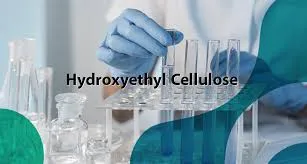
Սպտ . 03, 2024 01:42 Back to list
HPMC for Gypsum Plaster
HPMC for Gypsum Plaster An Essential Component for Enhanced Performance
Hydroxypropyl Methylcellulose (HPMC) is a versatile, non-ionic cellulose ether widely used in the construction industry, particularly in gypsum plaster formulations. Its incorporation significantly enhances the performance and workability of gypsum-based materials, making it an essential additive for achieving optimal results in plaster applications.
HPMC for Gypsum Plaster An Essential Component for Enhanced Performance
Moreover, HPMC contributes to the adhesion properties of gypsum plaster. When applied to surfaces, plaster must bond securely to ensure durability and longevity. HPMC enhances the adhesion of plaster to various substrates, including brick, concrete, and drywall. This improved bonding capability helps prevent issues like peeling and flaking, which can compromise the integrity of the plaster and the overall aesthetic appearance of the finished surface. As a result, HPMC not only improves the immediate application but also contributes to the long-term performance of the plaster.
hpmc for gypsum plaster

Another significant advantage of using HPMC is its role in controlling the rheological properties of the plaster mix. HPMC acts as a thickening agent, allowing for better control over viscosity and flow characteristics. This is crucial during the mixing and application processes, as it allows for the creation of a plaster that can be easily manipulated without sacrificing consistency or performance. Adjusting the rheology with HPMC can lead to a more homogeneous mixture, ensuring that the plaster spreads evenly and adheres well to surfaces.
HPMC also aids in the reduction of dust formation during mixing. Dust can pose health risks to workers and create a messy working environment. By incorporating HPMC, manufacturers can produce gypsum plasters that generate less dust, leading to a cleaner job site and a healthier atmosphere for workers. This characteristic is particularly important in indoor applications where air quality is a concern.
In conclusion, the use of Hydroxypropyl Methylcellulose (HPMC) in gypsum plaster formulations offers numerous benefits, including enhanced water retention, improved adhesion, better control of rheological properties, and reduced dust generation. These advantages make HPMC an indispensable component in modern plaster manufacturing, contributing to higher quality finishes and increased satisfaction among both contractors and end-users. As the demand for high-performance construction materials continues to grow, HPMC remains a crucial ingredient in the development of advanced gypsum plasters that meet the evolving needs of the construction industry.
-
Unlocking the Benefits of HPMC Products: A Gateway to Versatile Applications
NewsAug.07,2025
-
Unleashing the Potential of HPMC Ashland: A Comprehensive Look
NewsAug.07,2025
-
Tile Bonding Cellulose: The Key to Superior Adhesion and Durability
NewsAug.07,2025
-
Hydroxypropyl Methylcellulose Powder: The Versatile Component in Modern Pharmaceuticals
NewsAug.07,2025
-
Hydroxyethyl Cellulose: The Versatile Solution for Various Industries
NewsAug.07,2025
-
Hydroxyethyl Cellulose (HEC): The Versatile Polymer for Various Applications
NewsAug.07,2025







